Four Rural Rail Lines in Chiba: Chiba’s Hidden Rail Gems
In this article we take a look at 4 rural lines in Chiba Prefecture which can be described as “Chiba’s Hidden Rail Gems”, not just for rail enthusiasts, but also tourists who want to a different side of Japan…
Discover Choshi Electric, Kominato, Isumi, and JR Kururi Lines
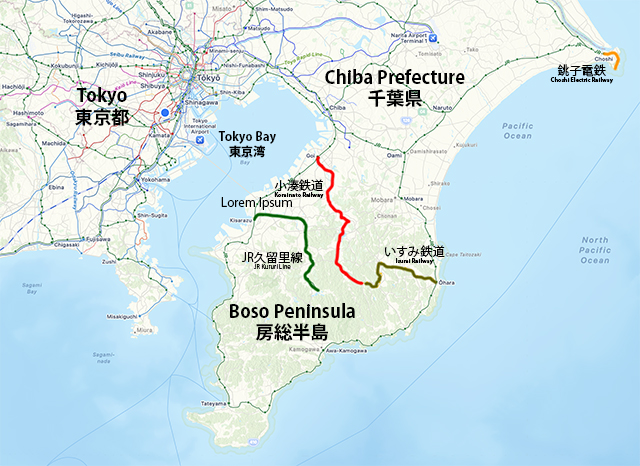
Although close to Tokyo, Chiba—beyond Tokyo Disneyland and Narita—attracts relatively few international visitors. Yet its rural railway lines offer a unique perspective on Japan, whether you’re a tourist or a rail enthusiast. Easily accessible from Tokyo, they make excellent day trips. Along with beautiful scenery, three of the lines let you experience rail travel as it was in the 70s, 80s, and early 90s—even in Tokyo.
Click on Icon to go to information on each railway
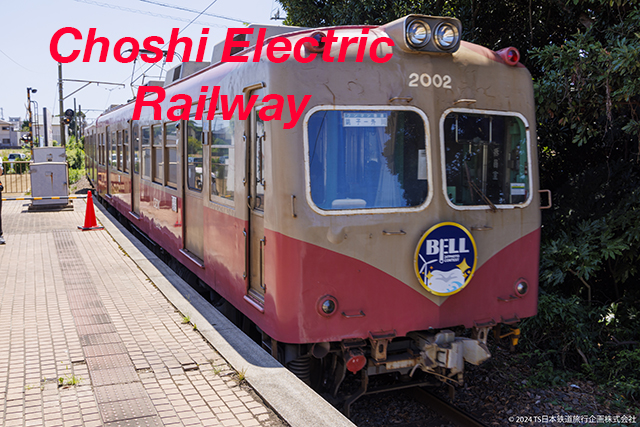
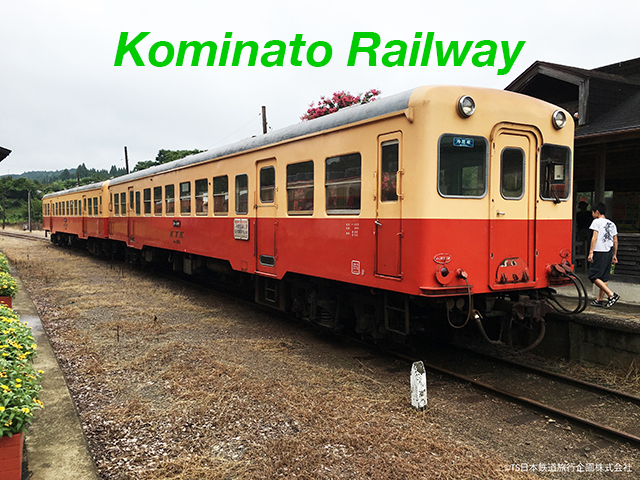
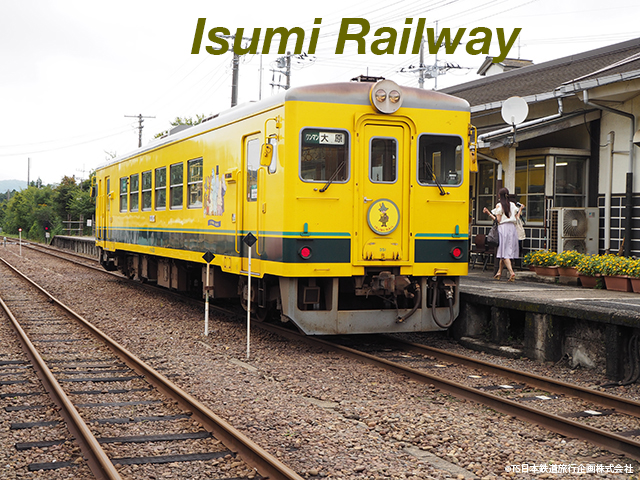
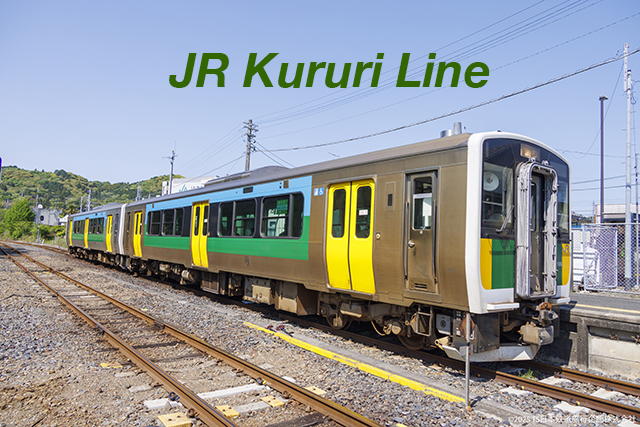
Choshi Electric Railway (銚子電鉄) – a railway famous for rice crackers and a great survival instinct!
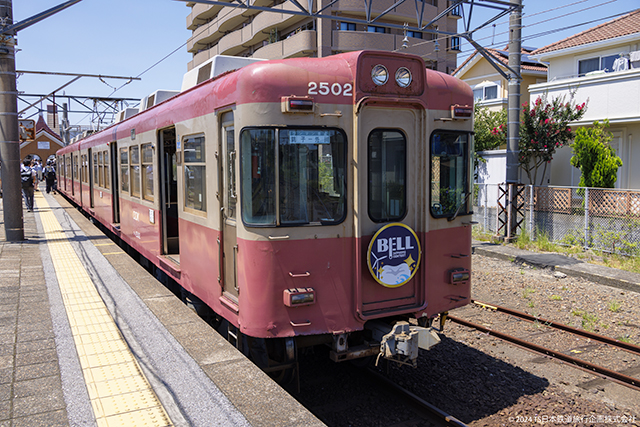
it’s also the shortest. All of its stations lie within Choshi City.
The line runs from JR Choshi Station to Tokawa, with Inubo Station offering easy access to the scenic Inubo Cape.
Choshi Electric Railway has a turbulent history. At one point, the tracks were removed and buses replaced the train service. For part of its past, the railway served the famous Yamasa Shoyu (soy sauce) factory at Nakanocho Station—until Yamasa built its own line linking the factory directly to the national rail network (then JNR, now JR East) at Choshi.
Despite repeated threats of closure, strong local opposition has kept the line alive, with subsidies from both Chiba Prefecture and Choshi City supporting its continued operation.
How Rice Crackers saved the railway…
In 2006, Choshi Electric Railway faced bankruptcy after a series of setbacks: a major embezzlement by its then-president, a government order from the Ministry of Transport to carry out costly repairs to its tracks and crossings, and the looming expense of mandatory train recertification. The company urgently needed funds.
The railway had already launched a small side business selling a local specialty, nure senbei (moist rice crackers). In a desperate plea, they posted an appeal on their website: “Please buy our nure senbei. We need money to repair our trains.”
To their surprise, orders poured in from across Japan, as people rallied to support the struggling railway. National TV picked up the story, and within just 10 days, the company raised the funds it needed.
Today, Choshi Electric Railway remains famous for its nure senbei, which continues to be sold as a symbol of its resilience.
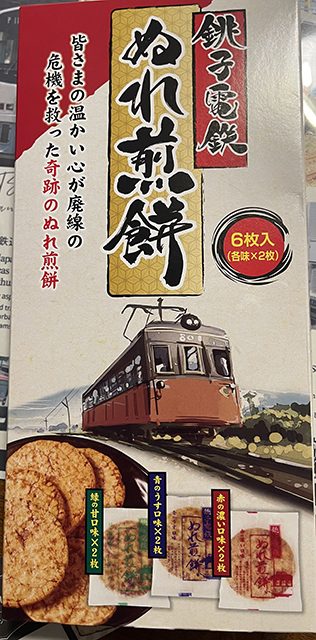
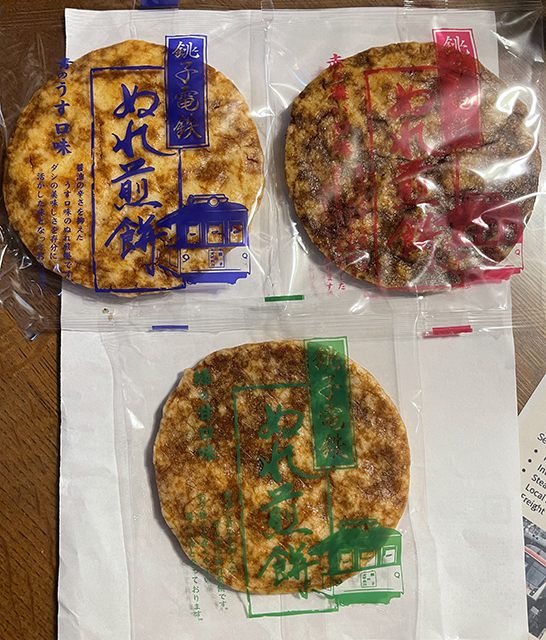
Places to see along the Choshi Dentetsu Line
Yamasa Soy Sauce Factory: Factory tours available
Choshi City is famous amongst other things for Shouyu or Soy Sauce. The Yamasa Shouyu Company’s factory stands very close to the Choshi Dentetsu Line close to Choshi and Nakanocho stations. Factory tours are available https://www.yamasa.com/english/enjoy/factory-visit/
Choshi Dentetsu Train Yard & Retro Station Building
Although small, you can see some of Choshi Dentetsu’s old rolling stock at the depot which is visible from Nakamocho Station
Nakanocho Station is where Choshi Dentetsu’s head office is based. The station building itself is a wooden structure and together with wooden benches retains much of its charm from the railway’s early days.
Kannon Station area
- Iinuma Kannon (Enpuku-ji Temple)
This temple dates back to the 9th century and includes a 5 storey pagoda and large stone Buddha.
- Choko Shrine
A shinto shrine which is next to the Iinuma Kannon.
- Choshi Fish Market.
Choshi is an important fishing port and has one of the largest fish markets in Japan. The main wholesale market is close to Kannon Station and has a public viewing gallery that is open from 8am to 11:30am on weekdays. The market is known for its sale of Tuna and Marlin.
Inubo Station area
Inubo station itself is interesting and also the best place to buy the famous Choshi Dentetsu Nure Sembei. It is also a short walk (10 mins) to the Inubo Cape coastline
- Inubo Cape is the eastern most point in Chiba Prefecture and the Kanto region. Sticking out into the pacific ocean it is known for its coastal scenery and views, marine caves and the powerful waves that crash upon the rugged coastline. The lighthouse is open to the public.
- Inubo Saki Lighthouse: Its 99 step staircase lead to to the top of the lighthouse for some spectacular views of the ocean. The lighthouse was built in 1874 by British engineer Richard Brunton. It is listed as one of the top 100 lighthouses in the world.
- Tenbokan Horizon Observatory is close to the lighthouse on Mt Atago and offers a 330 degree view of the sea.

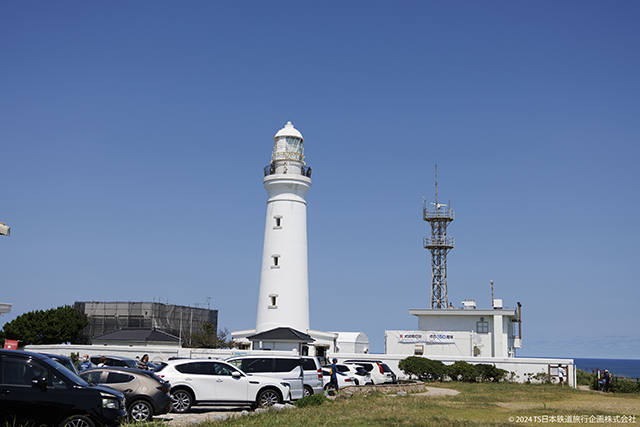
Tokawa Station – the end of the line
Tokawa Station is the end of the line.
- Former 800 series train (ex Iyo Tetsudo from Matsuyama) on static display at the end of the platform, now used as a cafe.
- The Tokawa Station Building is more than 100 years old and still retains its original feel.
- Old Fisherman’s Village Like many old villages in japan, the Tokawa area still retains its fisherman’s village atmosphere.
- Byoubugaura Cliff is a dramatic natural rock formation which is famous for its photographic appeal. The area is also good for nature hikes.
To reach Choshi from Tokyo it is best to take the JR Limited Express Shiosai . The journey time is just over 2 hours. There are local trains that run between Narita and Choshi on the JR Narita Line, with some trains running to / from Chiba. There are 4 trains a day in each direction daily with an extra late evening train on weekdays and occasional extra trains including one from Shinjuku that run mainly on some weekends and holiday periods.
Choshi Dentetsu operates trains on a roughly hourly schedule. Journey time from Choshi to Tokawa is about 20 minutes. You need to buy tickets on the train (If you have to go through the ticket barrier at Choshi go through manned gate and say you are catching the Choshi Dentetsu train). JR Rail Passes are not valid, but there is a Choshi Dentetsu 1 day pass (一日券) which can also be bought on the train.
Choshi Dentetsu just operates the single railway line. The line is electrified, but at 600V DC, one the few non tram railways in Japan that still operates at this voltage. This has led to the situation today that all its rolling stock is ex Iyo Tetsudo (Matsuyama Ehime Pref) that also operates on 600V DC. (Iyo Tetsudo had originally acquired the trains from Keio). The company currently has three operational 2 car units.
In the past though the company has acquired rolling stock from the former Tokyo Metro operator Eidan, Ohmi Railway, Keisei & Tsurumi Rinko Railway (current day JR Tsurumi Line operations).
Kominato Railway (小湊鉄道) – Discover Chiba’s countryside whilst travelling in some old trains!
The Kominato Railway (小湊鉄道 Kominato Tetsudo) operates a single 39km line that cuts across much of the Boso Peninsula. The line runs between Goi where it connects to the JR East Uchibo Line and Kazusa Nakano where it connects to the Isumi Railway Line.
This year (2025) it celebrates the 100th anniversary of its start of operations.
The Kominato Railway is famous for the scenery along the line which according to the season passengers will see Pink Sakura, Yellow Rape flowers (Nanohana 菜の花) in the spring, hydrangeas and lush greens during the summer and golden rice paddies and autumn foliage from late summer and the Autumn.
Many of the stations along the Kominato Railway Line are the original wooden structures with 10 of the 18 stations listed as Registered Cultural Assets.
For rail enthusiasts the line is operating Diesel trains that it bought more than 60 years, and even its newest trains are ex JNR / JR East KiHa 40 DMUs built in the late 80s. It also has an interesting signalling / control set up (see later).
Places to see and visit along the Kominato Railway
Stations that are registered Tangible Assets
- KAZUSA-MURAKAMI The station opened in 1927, originally as a halt. The station is about 1.5km from the remains of the former Kazusa Kokubun-ji (temple) which had a rare 7 storey pagoda. https://www.kominato.co.jp/station/kazusamurakami/
- AMAARIKI Opened in 1925, and original wooden station building still exists. https://www.kominato.co.jp/station/amaariki/
- KAZUSA-YAMADA Opened in 1925 as Yorogawa (Yoro river) Station. The station building is the original wooden structure https://www.kominato.co.jp/station/kazusayamada/
- UMATATE Another one of the original stations when the line opened with the original wooden structure https://www.kominato.co.jp/station/umatate/
- KAZUSA-USHIKU Opened in 1925, theis station is the busiest station on the line. The Ushiku area was marshland and with that and the favourable terrain led to a flourishing local economy and growth of the area.https://www.kominato.co.jp/station/kazusaushiku/
- Kazusa-Tsurumai Station – Another 100 year old station. The local area was once the location of a castle. The station, which is listed as one of the “top 100 best stations in the Kanto region” is often used as film location. https://www.kominato.co.jp/station/kazusatsurumai/
- TAKATAKI Not far from the Takataki Shrine one of Chiba’s “power spots” and Takataki Lake, the reservoir behind the Takataki Dam on the Yoro River, the station itself is very picturesque. https://www.kominato.co.jp/station/takataki/
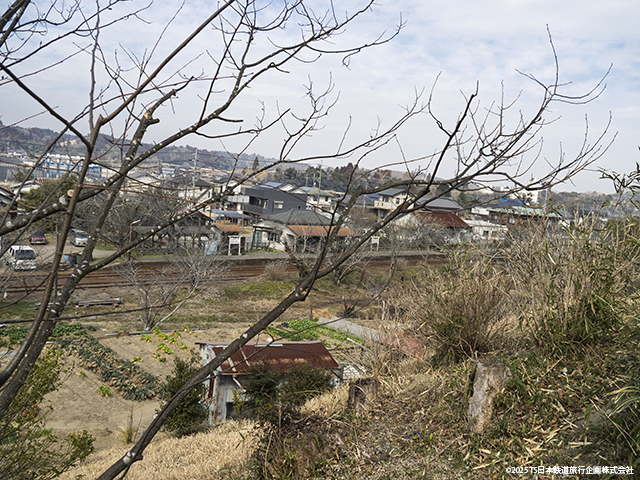

- SATOMI The area is named after the Satomi clan. the nearby Sariyama was famous for its high quality gravel ballast used in railway construction. Today the mountain is famous for hiking and picking wild vegetables. https://www.kominato.co.jp/station/satomi/
- TSUKIZAKI One of the younger stations, opened in 1926. It was restored to its original state in 2019. Nearby is the ‘Chibanian’ geological formation, where the Earth’s magnetic field reversed. At the Y Shop opposite the station you can purchase Kominato Railway merchandise. https://www.kominato.co.jp/station/tsukizaki/
- YOROKEIKOKU This station opened in 1928 and is the gateway station to the Yoro River Gorge. The Awa-no-Taki ( Awa Waterfall) is a bus ride away. The Shusse Kannon & Suigetsu-ji Temples are also not so far away. The area is also good for hiking with several course in the area. https://www.kominato.co.jp/station/yorokeikoku/
Goi Station – a good place for rail enthusiasts
Goi Station is actually a JR Station, but it is home to the Kominato Railway head office and railway depot (Kominato Railway is also a major bus operator). You can get a good view of the depot from the station platform, and also from the Kominato Goi Cafe and Waiting Room, which has a small garden next to the depot. You can also buy Kominato Railway Merchandise at the cafe
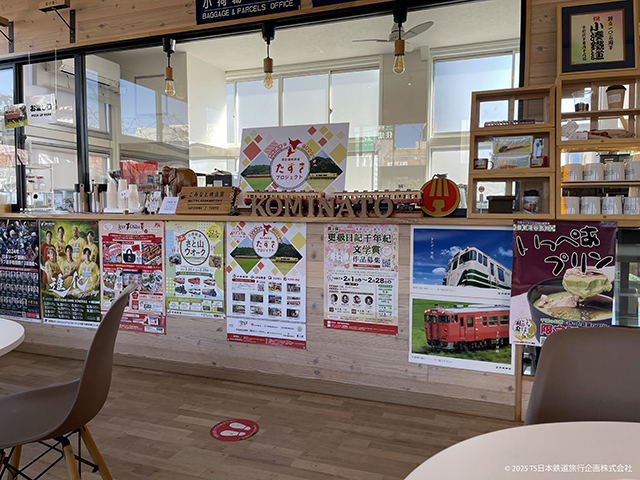
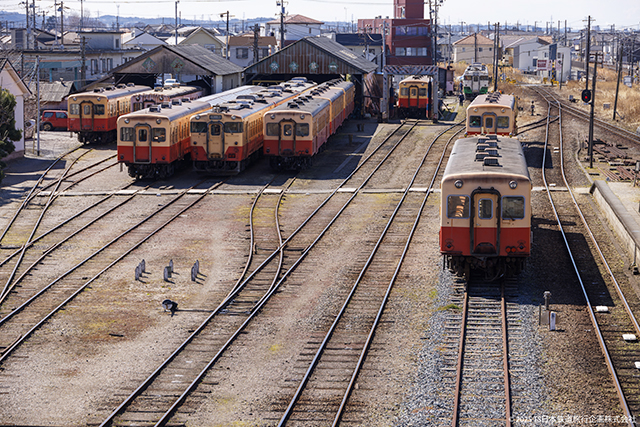
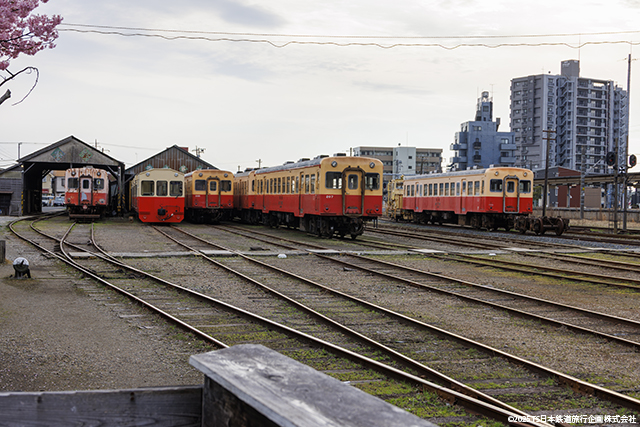
Kominato Railway Tourist Train “Boso Satoyama Torokko Train”
Operating at weekends and holidays from Mid March until Mid December this train has open sides and a glass roof thus allowing you to both see and feel the countryside. The train is hauled by a retro steam engine, it is actually a diesel locomotive made to look like a steam locomotive.
Kazusa Nakano
Kazusa Nakano Station is the end of the Kominato Railway and it is also the interchange with the Isumi Railway
The Kominato Railway is best reached by JR Uchibo Line. There are some through trains from / to the the Sobu Line Rapid Service connecting to the Tokyo area (and beyond). Uchibo Line services go as far as Chiba where there are connections for Tokyo. You can also change at Soga for services on the Keiyo line to Tokyo.
On the Kominato Railway services between Goi and Kazusa Ushiku operate approximately hourly with services going through to Kazusa Nakano operating between 1 and 2 hours.
JR Rail Passes cannot be used on the Kominato Railway, but there is a one day pass (一日券) available.
The Kominato Railway is an interesting line for rail enthusiasts, particularly considering how close it is to Tokyo.
General info:
The line is non-electrified, and is operated by single car DMUs either as single unit or 1+1 formation. The original plan was for it to reach the Pacific Coast Line at Kominato Town in what is now Kamogawa City. This plan was abandoned due to lack of money and the fact that in 1934 it was decided to build what is now the Isumi Railway to reach Kazusa Nakano thus providing a connection to the Pacific coast although at a more northern point than intended. Services were originally steam hauled. In 1963 and 1964 a summer service was operated between Chiba and Yoro Keikoku.
There are two main points of interest:
Rolling Stock: Most of Kominato Railway’s rolling stock is made up of single car KiHa200 series diesel cars. these were built for Kominato Railway between 1961 and 1977. The cars are based on the JNR KiHa20 series. Car 201 which entered service in 1961 is still in regular service. 14 cars were bought and as of 1st April 2024 all 14 were still registered. In 2021~2022 Kominato Railway also acquired 5 KiHa40s from JR East that originally operated on the Gono and Tsugaru Lines. These units were built in the late 1980s thus bringing down the average age of the fleet quite considerably, but still maintaining the nostalgic feel to travelling on this railway, a big contrast to the mostly very modern stock operating in the rest of the Greater Tokyo area.
Signals & control: Although most of line, which is mostly single track except for some station loops is controlled by Colour aspect signals and ATS (Automatic Train Stop), between Satomi and Kazusa Nakano trains are controlled using physical token (tablet). The use of Physical tokens for train control is very limited in Japan with only a very few railways still using.
Isumi Railway (いすみ鉄道)- Yellow trains blend in with the Nanohana!
The Isumi Railway operates one line stretching 26.8km (16.7 miles) from Ohara on the Pacific Coast to Kazusa Nakano. At Ohara passengers can change to / from the JR Sotobo Line and at Kazusa Nakano to / from the Kominato Railway. The connection with the Kominato Railway means that with one change of trains passengers cross the Boso Peninsula instead of going all the way round.
The line passes through rural Chiba and you will be able to see rice paddies, forests and rural communities from the train. Seasonal views include sakura, rape seed yellow flowers (Nanohana 菜の花) and autumn foliage.
The railway was built by the Japanese Government Railways and named Kihara Line, it was originally planned to go as far as Kisarazu on the Tokyo Bay side of the peninsula using the route now used by the JR Kururi Line. This idea was abandoned due to cost. In 1988, shortly after Japan National Railways was privatised, it was transferred to the newly formed 3rd sector Isumi Railway.
Places to see and visit along the Isumi Railway
Otaki
Otaki is the main town served by the railway. The town has the following features:
- Otaki Castle and Museum About Otaki Castle
- Merchant town – Edo period streets with merchant’s homes and buildings many of which are registered as National Important Cultural Properties. Theer is also a museum called Akinai Shiryokan Trading Museum About Jokamachi area
- Boso Central Railway Museum – a small railway museum About the museum (Japanese)
- Mamenbara Gardens – particularly early summer when hydrangeas are in bloom
- Myōhōshōji Temple
- Isumi Shrine
Isumi Railway scenery
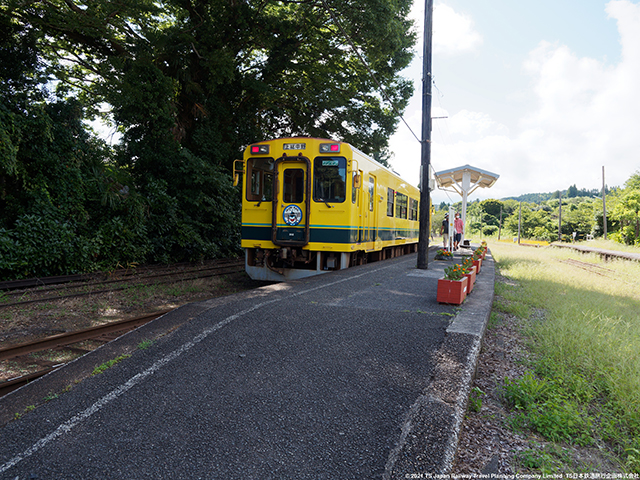
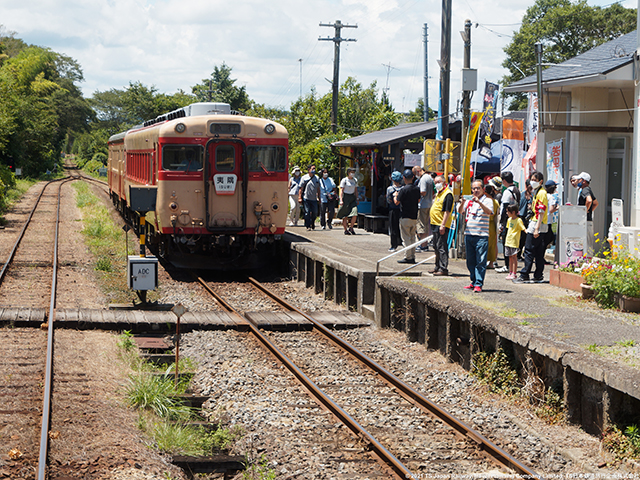
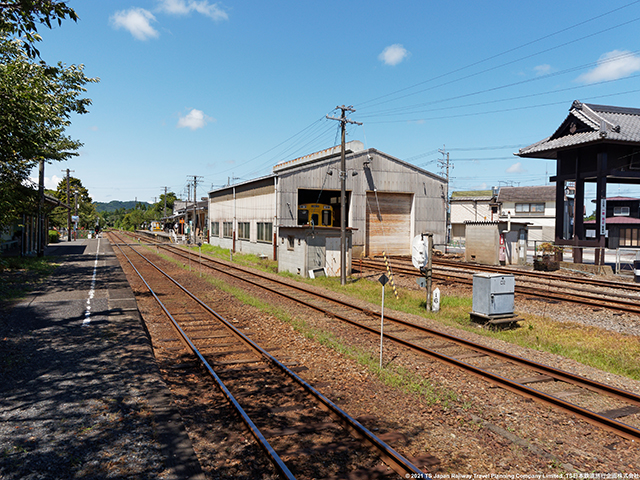
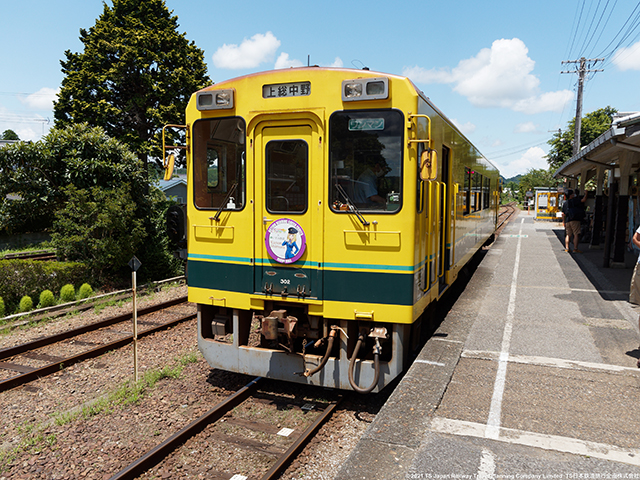
There are two ways to get to the Isumi Railway. One is to go to Ohara using the JR Sotobo Line. There are local trains from Chiba, Limited Express Wakashio from Tokyo and also ordinary services via the Sobu Rapid Line to / from Tokyo and beyond. Journey time from Tokyo Station to Ohara by Limited Express is about 1 1/4hrs and 1hr 50 minutes by ordinary train, either via Chiba and Kazusa Ichinomiya or via the Keiyo Line changing at Soga and Kazusa Ichinomiya.
The other way is via Goi and the Kominato Railway. In fact we would recommend combining the two railways to get the most out of your trip to Chiba
On the Isumi Railway JR Rail Passes are not valid, but there is a 1 day pass and also a 1 day pass combining the Isumi Railway and Kominato Railway.
Note at the time of writing this article all train services are suspended on the Isumi Railway, but there is a rail replacement bus service
The Izumi Railway is a non electrified single track railway. Isumi Railway has 4 diesel railcars that are in regular service – 2 x KiHa300 and 2 x KiHa350 which were built during the 2010s so are relatively young. The KiHa350 are designed to resemble JNR KiHa20 models.
Isumi Tetsudo also has a KiHa20(20-1303) which was built in 2015 to also resemble a JNR KiHa20 and is in original JNR livery.
Two ex JNR / JR West units, a KiHa52 and a KiHa28 were used for a tourist train that ran from Ohara to Kazusa Nakano on holidays and weekends but these two units have now been withdrawn.

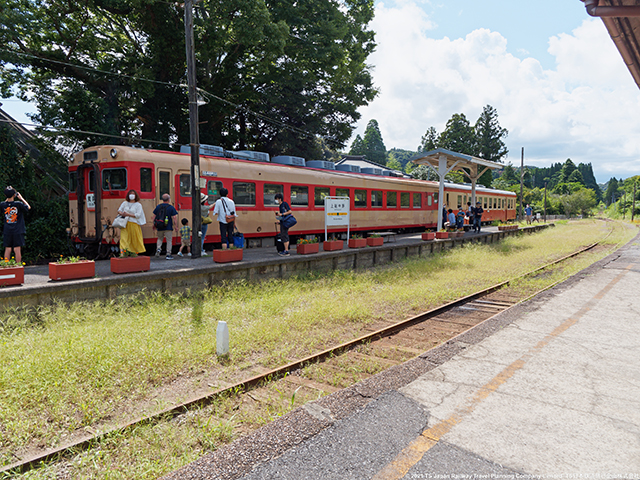
JR Kururi Line (JR久留里線)- Panoramic views from a castle, best natural water in Japan and Sake Brewing…and great scenery on the way!
The fourth line in this article is the JR Kururi Line. This line like the three Boso Peninsula lines we have talked about is also a scenic route. It is also one of the few diesel rail lines operated by JR East in the Greater Tokyo area.
It was originally built as a 762mm narrow guage railway by the Chiba Prefectural Government to improve transportation on the peninsula. The original line ran from Kisarazu to Kururi opening in 1912. In 1923 is became part of the Japanese Government Railways and was re-gauged to the Japanese standard 1,067mm in 1930.
The line was extended to Kazusa Kameyama, the current terminal point in 1936. The length of the line is 32.2km.
JR East is in discussions over the future of the section of line between Kururi and Kazusa Kameyama which suffers from low ridership, even though it is the most scenic part of the route.
What to see along the Kururi Line
Kururi Town
Kururi Town is the main town along the line (except for Kisarazu), and in fact most trains only run as far as Kururi from Kisarazu. Things to see include:
- Kururi Castle a reconstruction of the original castle. It was originally the stronghold of the Satomi Clan who ruled the area during samurai times. The castle, which is on a hill, offers panoramic views of the area. About Kururi Castle
- Kururi Sake Museum Close to the station is the Kururi Sake Museum. The area has a number of local sake breweries, such as Tohei, Yoshizaki and Sudouhonke. Click here for more information
- Springs and Wells: the main reason why Kururi has sake breweries is because of the high quality of the local water. In fact Kururi is famed for having one of the Top 100 water in Japan. You can see many springs as well as old and modern water wells walking around the town.
Kameyama Lake
Kameyama Lake, which is actually the resvoir behind Kameyama Dam is known as a tranquil natural beauty spot which is popular with hikers, and those doing boating and fishing . It is a short walk from Kazusa Kameyama Station
Food, particularly Soba Noodles
Kururi in particular, but the surrounding area is well known for its Soba restaurants and cafes, often cooked in the areas spring water.
Scenery along the Line
Like all the rail lines featured in this article, they are far more than a means from getting to A to B, but travelling on them is an experience in itself. This is particularly true if you are coming from Tokyo!
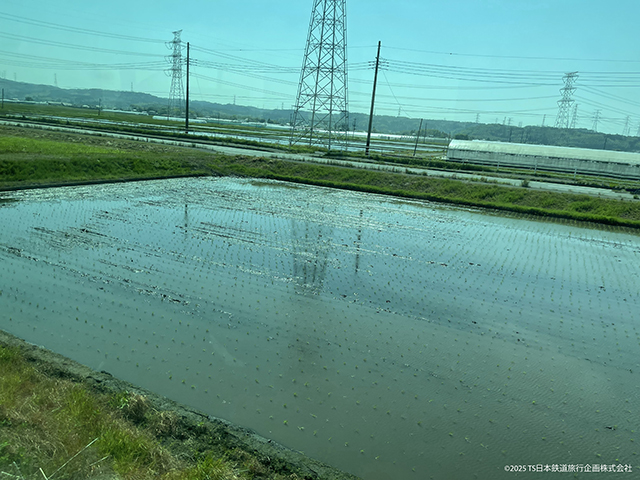
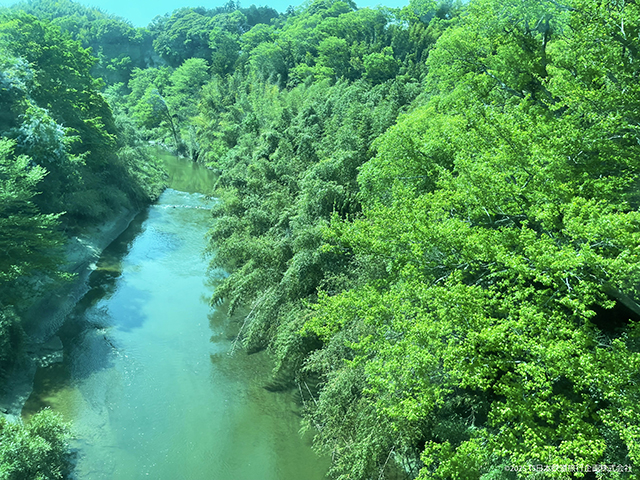
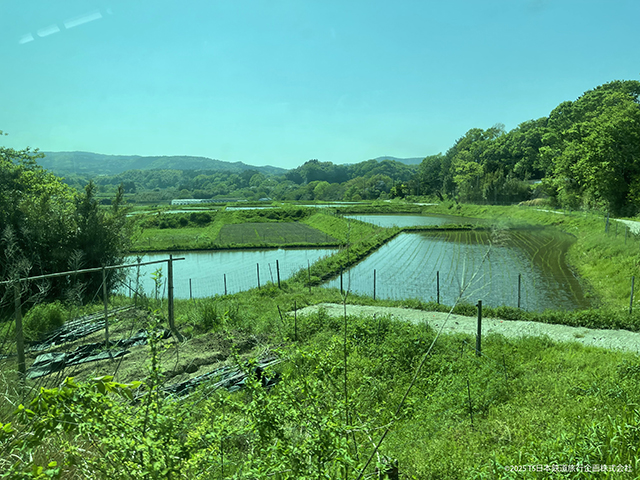
The JR Kururi Line connects with the JR Uchibo Line at Kisarazu, which is just a few stations on from Goi (the western starting point of the Kominato Railway). There are some through trains from / to the the Sobu Line Rapid Service connecting to the Tokyo area (and beyond). Uchibo Line services go as far as Chiba where there are connections for Tokyo. You can also change at Soga for services on the Keiyo line to Tokyo.
Between Kisarazu and Kururi there is a roughly hourly service in each direction. Trains running between Kururi and Kazusa Kameyama are hourly early morning and in the late afternoon / evening (most are through trains to / from Kisarazu), but only 1 train runs during the day time (in the afternoon in each direction) after the last morning train that departs Kisarazu at 7:25 and Kururi at 8:15.
JR Rail Passes, including those available locally are valid on this line.
The Kururi Line is non electrified. JR East E130 diesel cars are solely used, either in single or 2 car formation. the depot at Kisarazu is easily observed from the Kururi Line platform (platform 4 at Kisarazu Station). The KiHa130s were introduced to the Kururi Line in 2012, replacing old JNR era KiHa30 and KiHa38 Diesel cars.
One of the KiHa30s is now at Isumi Railway although not in operation.(last seen on sidings at Kuniyoshi Station)
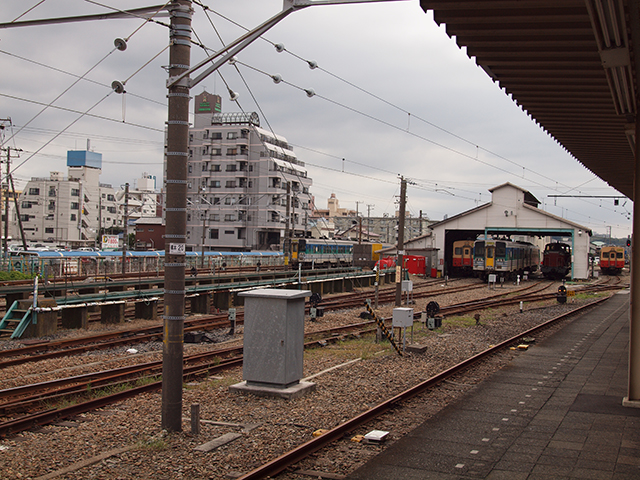
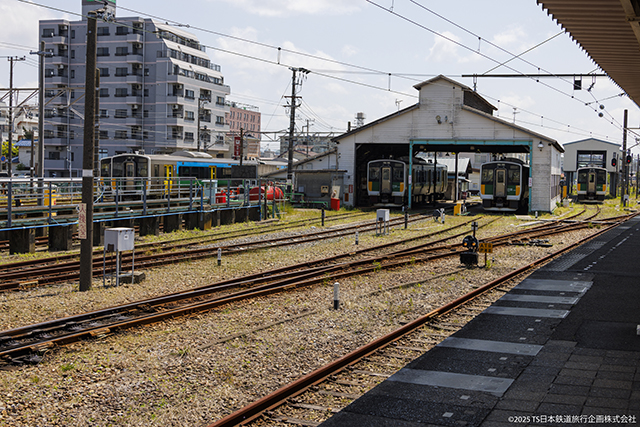
Conclusion: Great ways to escape the big & modern city – Explore Chiba by Train…Explore Chiba’s Railways…
Despite most of the prefecture not being so well known to inbound visitors, Chiba has a lot to see for both tourists and rail enthusiasts, particularly if you want to escape the big modern world of Tokyo. The 4 railways in this article provide a great way to explore and experience the prefecture and Japanese countryside and rural towns.
TS Japan Rail can help you plan your itinerary and provide more detailed advice for those who wanted to get off the beaten path and see the real Japan!
Whether you want to See Japan by Rail or Explore Japan’s Railways, TS Japan Rail can help you plan your trip with ideas, designing travel itineraries, assisting with bookings and more.
We take the stress out of planning your trip and help ensure it is successful!
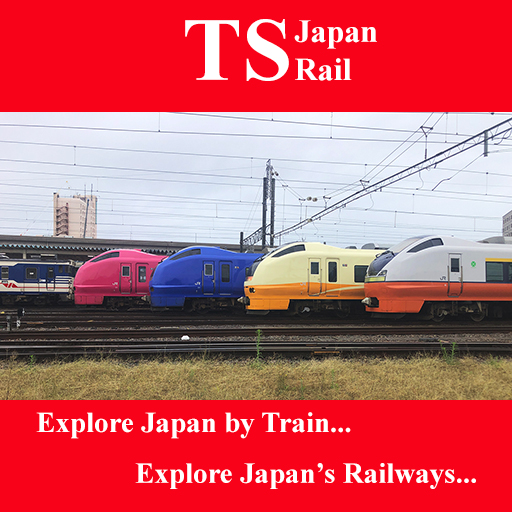
For more information on our services
see our homepage!
















コメント